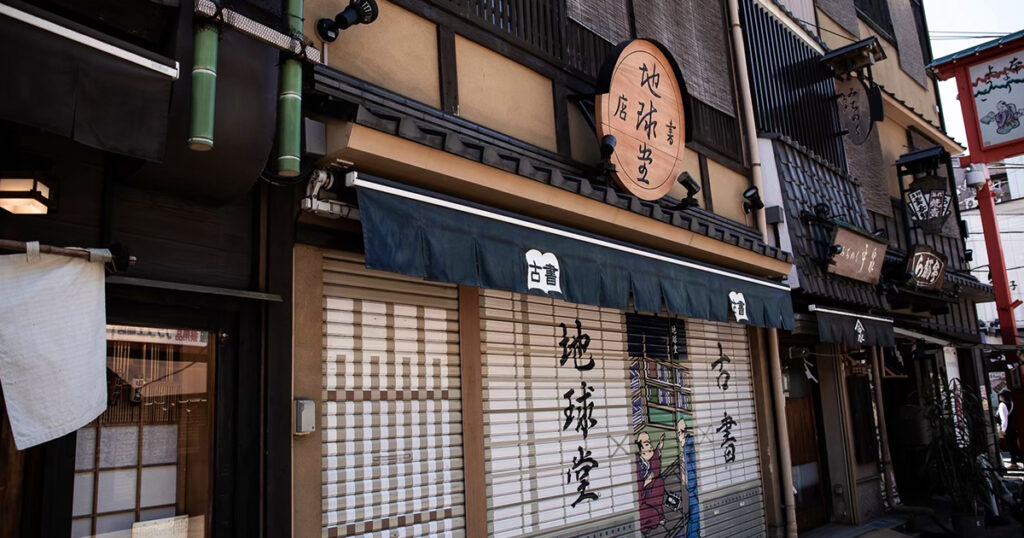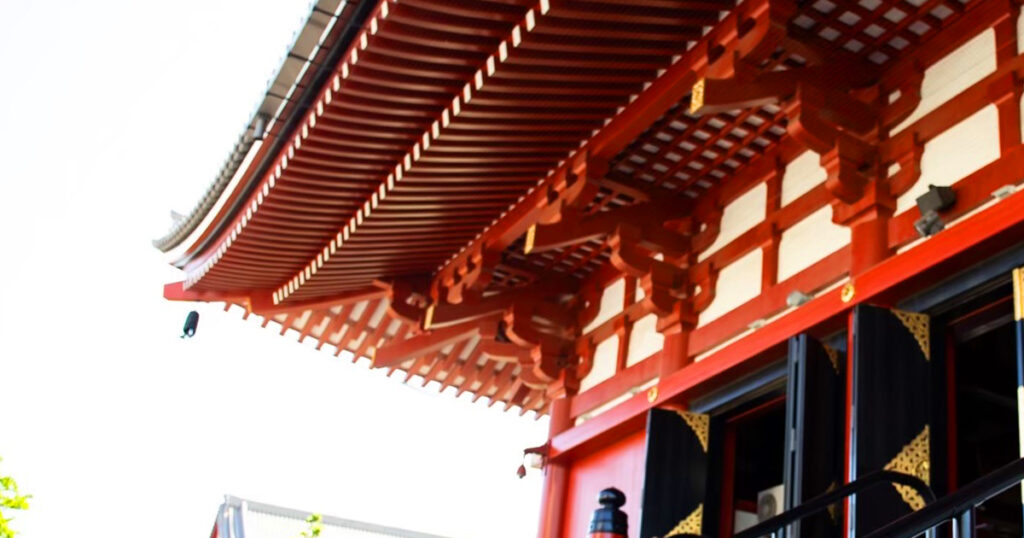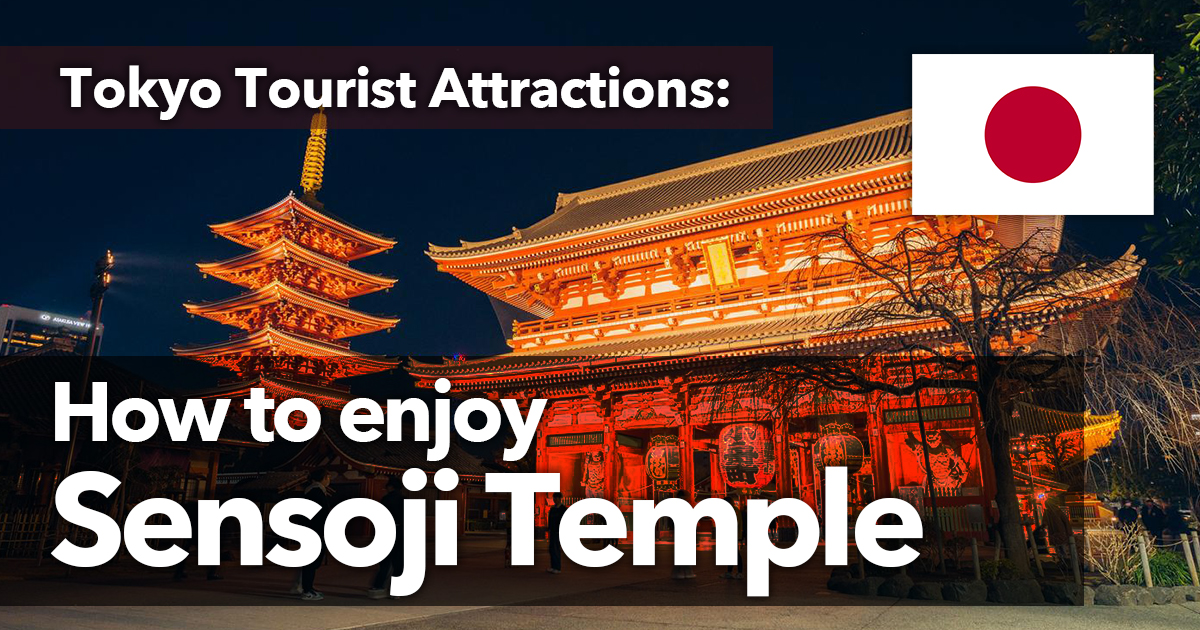INTRODUCTION
Sensoji Temple is a must-see destination for tourists visiting Tokyo. The historic temple and bustling shopping area are popular with many foreign tourists. Sensoji Temple is a place where Tokyo’s traditions and modernity merge, allowing visitors to experience Japanese culture firsthand. Sensoji’s large lanterns and Kaminarimon gate are known as Instagram-worthy spots. Visitors can also enjoy beautiful Japanese architecture and tranquil gardens as they stroll through the temple grounds. A visit to Sensoji Temple will allow you to fully enjoy the atmosphere of good old Japan.
History and Culture of a Tourist Attraction

The history of Senso-ji Temple is deeply rooted in the Asakusa area, dating back to its foundation in 628. Senso-ji Temple is known as the oldest temple in Tokyo and has attracted many devotees from ancient times to the present day. The temple enshrines the bodhisattva Kannon (Goddess of Mercy), and many people visit the temple to offer their prayers. In addition, the buildings and grounds of Senso-ji Temple strongly reflect the culture and architectural style of the Edo period.
Many events and festivals are held around Senso-ji Temple throughout the year to give visitors a sense of traditional Japanese culture. One of the most famous is the Sanja Festival, held every May. At this festival, each town carries a mikoshi, a portable shrine, in a lively parade. This allows visitors to experience firsthand the traditional Japanese festival culture.
A visit to Sensoji Temple will allow visitors to immerse themselves in a special space where history and culture intersect, and to gain a deeper understanding of Tokyo’s rich traditions.
Places to visit

Suggested times of year to visit
The best times to visit Senso-ji Temple are spring and fall. In spring, cherry blossoms bloom beautifully and make the scenery of Senso-ji even more gorgeous. Especially from the end of March to early April, many tourists visit the temple to enjoy the cherry blossoms. On the other hand, the autumn foliage is magnificent in fall, when the trees on the temple grounds turn red and yellow, offering a different kind of beauty. The best time to visit in autumn is from October to November. The weather is milder during these months, making them ideal for strolling.
Introduction to the main sights and popular tourist attractions
Senso-ji Temple has a number of attractions that should not be missed. First, the Kaminarimon (Thunder Gate) is the symbol of Sensoji Temple, and its huge lanterns are famous as an Instagram-worthy spot. Passing through the Kaminarimon, you will find Nakamise-dori, a bustling shopping street where you can buy traditional souvenirs and Japanese sweets.
The main hall of Sensoji Temple is characterized by its solemn and beautiful architecture. Stepping into the main hall, one is enveloped by its serenity and sacred atmosphere, which is a soothing sensation. The five-story pagoda is another important attraction of Senso-ji, and its height and beauty will overwhelm you.
Another popular spot is the Asakusa Shrine. This shrine, along with Sensoji Temple, attracts many worshippers, especially during the Sanja Festival.
Points to note at tourist spots
There are a few things to keep in mind when visiting Senso-ji. First, be quiet in the temple and remember to be considerate of other visitors and tourists. In particular, photography may not be allowed in the main hall, so please follow the posted information.
In addition, Nakamise-dori is often very crowded, so please be careful with your valuables. In particular, please hold onto your wallets and smartphones, and be careful of pickpockets.
Finally, since Senso-ji Temple is visited by many foreign tourists, many guides are written in English, but you will have a more enjoyable sightseeing experience if you learn some basic Japanese greetings and manners in advance.
Access from the nearest station
Access from the nearest station
The nearest station to Senso-ji Temple is Asakusa Station on the Tokyo Metro Ginza Line and Toei Asakusa Line. From Asakusa Station, it takes about 5 minutes to reach Sensoji Temple on foot. When using the Ginza Line, the shortest way to Kaminarimon is to exit from Exit 1. If you take the Toei Asakusa Line, it is also convenient to exit from Exit A4 and go to the Kaminarimon. Because of the extremely convenient train service, the Kaminarimon is easily accessible from other major sightseeing spots in Tokyo.
Access from Narita Airport
Access to Sensoji Temple from Narita Airport is very easy. First, take the Keisei Narita Sky Access Line and get off at Keisei Ueno Station. From there, transfer to the Tokyo Metro Ginza Line to Asakusa Station. The trip takes about 1 hour and 15 minutes, and there is a direct train from the airport, so transfers are smooth. Airport buses are also available, with a direct bus service from Narita Airport to Asakusa, which takes about 1 hour and 30 minutes.
Access from Haneda Airport
To get to Sensoji Temple from Haneda Airport, first take the Keikyu Line and change to a train that goes directly to the Toei Asakusa Line. Once you get off at Asakusa Station, it is a 5-minute walk to Sensoji Temple. This route requires few transfers and takes only about 45 minutes. Airport limousine buses are also available, with direct bus service from Haneda Airport to the Asakusa area, which takes approximately one hour. Because of its easy access from the airport, Senso-ji Temple is a convenient tourist destination that can be visited immediately upon arrival.
Senso-ji Temple is one of the major tourist attractions in Tokyo, and its extremely convenient transportation makes it an easy place for many tourists to visit. By knowing how to access the temple efficiently, you can enjoy a pleasant sightseeing tour.
Hours of Operation, Admission Fees and Other Fees
Hours of Operation
Senso-ji Temple is open year-round and can be visited at any time. General visiting hours are from 6:00 a.m. to 5:00 p.m., but during the summer season (April through September) the hours are extended to 6:00 a.m. to 6:00 p.m. Visiting early in the morning or in the evening is recommended to avoid the crowds and to enjoy a more relaxed visit. In addition, the Kaminarimon and Nakamise-dori can be visited freely 24 hours a day.
Admission
Admission to Sensoji Temple is free. Anyone can enjoy the atmosphere of a traditional Japanese temple. However, there may be an additional fee for special exhibits and special visits to the temple precincts. We recommend that you check the official Senso-ji website or tourist information centers for information on these events in advance.
Senso-ji Temple is a free tourist attraction that is worth taking the time to visit because of its many attractions. The fact that it is free also makes it ideal for families and budget-conscious travelers. When visiting, be sure to check the official website and local information centers for the most up-to-date information to ensure a fulfilling sightseeing experience.
Knowing Senso-ji Temple’s hours of operation and admission fees will help you plan your visit and enjoy your Tokyo sightseeing experience even more.
Gourmet
Introducing recommended meals and restaurants
When you visit Senso-ji Temple, be sure to enjoy some of the nearby gourmet spots. Asakusa is a place steeped in history and tradition, and is also extremely rich in culinary culture. Below are some recommended meals and restaurants in the Asakusa area.
Asakusa Imahan
Asakusa Imahan is known as a restaurant specializing in sukiyaki and shabu-shabu. With a history of more than 140 years, this long-established restaurant serves exquisite sukiyaki using carefully selected Japanese beef. The atmosphere in the restaurant is calm and relaxing, allowing diners to enjoy traditional Japanese cuisine at their leisure.
daikokuya tempura
Daikokuya Tempura is a famous restaurant where you can enjoy tempura, a specialty of Asakusa. Particularly recommended is the tempura rice bowl topped with a large shrimp tempura. The crispy fried tempura and the sweet and spicy sauce are a perfect match, and once you try it, you will never forget the taste. The location makes it easy to stop by while sightseeing.
asakusa mench
Asakusa Menchi- is a gourmet spot that is perfect for eating and walking around. The special menchikatsu is crispy on the outside and juicy on the inside, and you will be surprised at how delicious it is once you take a bite. You will be surprised at the delicious taste in every bite.
eel Kawamatsu
If you want to enjoy eel in Asakusa, we recommend Unagi Kawamatsu. Since its establishment, the eel has been grilled using traditional techniques, making it fluffy and tender, and the sauce is exquisitely flavored. A wide variety of menu items, such as unaju and hitsu-mabushi, are also attractive.
The Asakusa area is home to a wide variety of gourmet spots, allowing visitors to enjoy a delicious meal in between sightseeing tours. Enjoy the culinary culture of Asakusa as well as the historical townscape.
Shopping

Recommendations for local specialties and souvenirs
Asakusa is known not only for sightseeing but also for shopping. Local specialties and unique souvenirs are available, perfect for bringing back memories of your trip. Below are recommended specialties and souvenir spots in Asakusa.
Nakamise Street
Nakamise Dori, which runs from the Kaminarimon gate of Sensoji Temple, is a bustling shopping street with many stores stretching for about 250 meters. Here, visitors can purchase Japanese sweets, traditional handicrafts, and souvenirs unique to Asakusa. Particularly popular are wagashi (Japanese sweets) such as ningyo-yaki (doll-shaped pancakes) and kaminari-okoshi (a kind of rice cake made from thunder), which are not only tasty but also look cute and make great souvenirs.
Traditional Crafts in Asakusa Area
In the Asakusa area, there are many traditional crafts that have been sold since the Edo period. Examples include beautiful Edo faceted glassware, fans carefully crafted by artisans, and Japanese umbrellas. These items are not only practical but also highly artistic and will provide a special memory.
Asakusa ROX
Asakusa ROX is a commercial complex where you can enjoy everything from shopping to dining to relaxation. Many stores are ideal for finding souvenirs, and you can purchase Japanese goods and traditional Japanese items. In addition, there are restaurants and cafes inside the building, making it convenient for visitors to take a break from shopping.
Asakusa Culture and Tourism Center
The Asakusa Culture and Tourism Center sells local specialties and unique souvenirs. Especially recommended are goods such as T-shirts, tote bags, and mugs with Asakusa-related designs. Many of these items are only available here and make great souvenirs of your trip.
Shopping in Asakusa is a fascinating experience that can be enjoyed as part of your sightseeing tour. Find local specialties and unique souvenirs to enrich the memories of your trip.
Summary

Sensoji Temple is a popular sightseeing spot in Tokyo for foreigners. Cherry blossoms in spring and autumn leaves in fall are recommended, and there are many attractions such as Kaminarimon, Nakamise Street, the main hall, and the five-story pagoda. Senso-ji Temple is most accessible from Asakusa Station on the Tokyo Metro Ginza Line or the Toei Asakusa Line, and is also easily accessible from Narita Airport or Haneda Airport. The temple is open from 6:00 a.m. to 5:00 p.m. (until 6:00 p.m. in summer), and admission is free. The surrounding area is also rich in culinary delights, including Asakusa Imahan for sukiyaki and Daikokuya Tempura for tempura. For shopping, local specialties and souvenirs are available at Nakamise-dori and Asakusa ROX.
Sensoji Temple is a fascinating tourist attraction that combines history and culture. Its easy accessibility, abundant attractions, gourmet food, and shopping make it an essential part of Tokyo sightseeing. When you visit, you will fully enjoy the harmony of Asakusa’s tradition and modernity.



